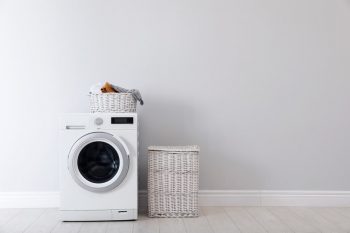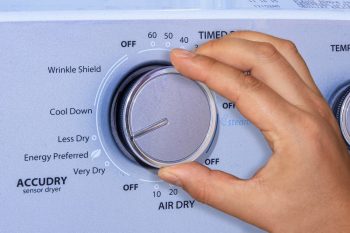
Air conditioning filters are an essential part of maintaining your home’s indoor air quality and ensuring your HVAC system runs efficiently. One crucial aspect of these filters is their MERV rating. But what exactly is MERV, and how does it impact your AC filters? Let’s delve into this topic to help you understand and make informed decisions about your home’s air quality.
MERV in AC filters stands for Minimum Efficiency Reporting Value, a rating system developed by the American Society of Heating, Refrigerating, and Air Conditioning Engineers (ASHRAE) to measure the effectiveness of air filters. MERV ratings range from 1 to 20, with higher ratings indicating better filtration performance. The rating evaluates a filter’s ability to capture particles between 0.3 and 10 microns in size. A higher MERV rating means better air quality, but it’s crucial to ensure your HVAC system can handle the MERV ratings you require to avoid system strain and potential damage.
Understanding MERV
MERV stands for Minimum Efficiency Reporting Value. The American Society of Heating, Refrigerating, and Air Conditioning Engineers (ASHRAE) developed this measurement scale to rate the effectiveness of air filters. MERV ratings range from 1 to 20, with higher ratings indicating better filtration performance.
The rating is based on a filter’s ability to capture particles between 0.3 and 10 microns (µm) in size. To give you a reference point, a single strand of human hair is typically 50 to 70 microns in diameter. So, we’re talking about some pretty small particles here!
MERV Ratings and Their Impact
A higher MERV rating means that the filter can trap smaller air particles, providing better air quality. Filters with MERV ratings between 6 and 13 are generally recommended for residential use, as they offer a balance between filtration efficiency, airflow, and affordability.
However, using a filter with a MERV rating that’s too high for your HVAC system can cause problems. High MERV filters can restrict airflow, causing your system to work harder, leading to higher energy costs and potential damage to your HVAC system.
MERV Ratings and Health Benefits
If your family has allergy problems or serious respiratory issues like asthma, you may want to invest in filters with higher MERV ratings. Higher MERV filters can improve indoor air quality by removing more pollutants from the air, leading to a reduction of common allergy symptoms such as runny nose, persistent sneezing, sore throat, rashes, eye irritation, headaches, and fatigue.
Choosing the Right MERV Rating
When choosing an air filter for your HVAC system, it’s essential to select one with a MERV rating that is compatible with your system. Always check if your HVAC system has a limit for MERV rating and choose a filter within that range to maintain optimal functionality and energy efficiency.
MERV Rating and AC Filter Replacement
The frequency of replacing AC filters with different MERV ratings depends on various factors, such as the type of filter, its thickness, usage, and specific conditions in your home. As a general rule, filters with MERV ratings between 1 and 4 should be replaced every 30 days, while those with MERV ratings between 5 and 8 should be changed every two to three months.
Conclusion
In conclusion, the MERV rating in your AC filter plays a vital role in maintaining your home’s air quality and the efficiency of your HVAC system. A higher MERV rating can improve air quality, but it’s essential to ensure your HVAC system can handle the MERV ratings you require to avoid overworking the system and incurring costly repairs. Understanding MERV ratings can help you make informed decisions about your home’s air quality and energy efficiency.
Remember, the right balance between air filtration efficiency and the compatibility of the filter with your HVAC system can provide you with optimal indoor air quality without compromising the performance or lifespan of your HVAC system. Always consult with an HVAC professional if you’re unsure about the best MERV rating for your specific needs and system.
Frequently Asked Questions
What does a MERV rating of 1 mean?
A MERV rating of 1 is the lowest on the scale. It means the filter is able to capture less than 20% of particles in the 3.0-10.0 µm size range. These filters are typically used for basic residential or minimal commercial applications.
Can I use a filter with a MERV rating of 20 for my home HVAC system?
A MERV rating of 20 is the highest on the scale and is typically used in specialized environments like hospitals or clean rooms. Using such a high-rated filter in a residential HVAC system can severely restrict airflow and cause the system to work harder, leading to higher energy costs and potential damage.
What are some examples of particles that a high MERV filter can capture?
High MERV filters (13-20) can capture smaller particles such as bacteria, tobacco smoke, and even viruses. They are also efficient at capturing dust, pollen, mold spores, and pet dander.
How does a higher MERV rating affect energy efficiency?
A higher MERV rating means the filter has smaller pores to capture more and smaller particles. However, this can also restrict airflow, causing the HVAC system to work harder to push air through the filter. This can lead to higher energy consumption and costs.
Can a higher MERV rating filter help with pet allergies?
Yes, higher MERV rating filters (like those between 13-16) can effectively capture pet dander, which is often a cause of indoor allergies. However, it’s essential to ensure your HVAC system can handle a higher MERV rating to avoid potential issues with airflow and system efficiency.












